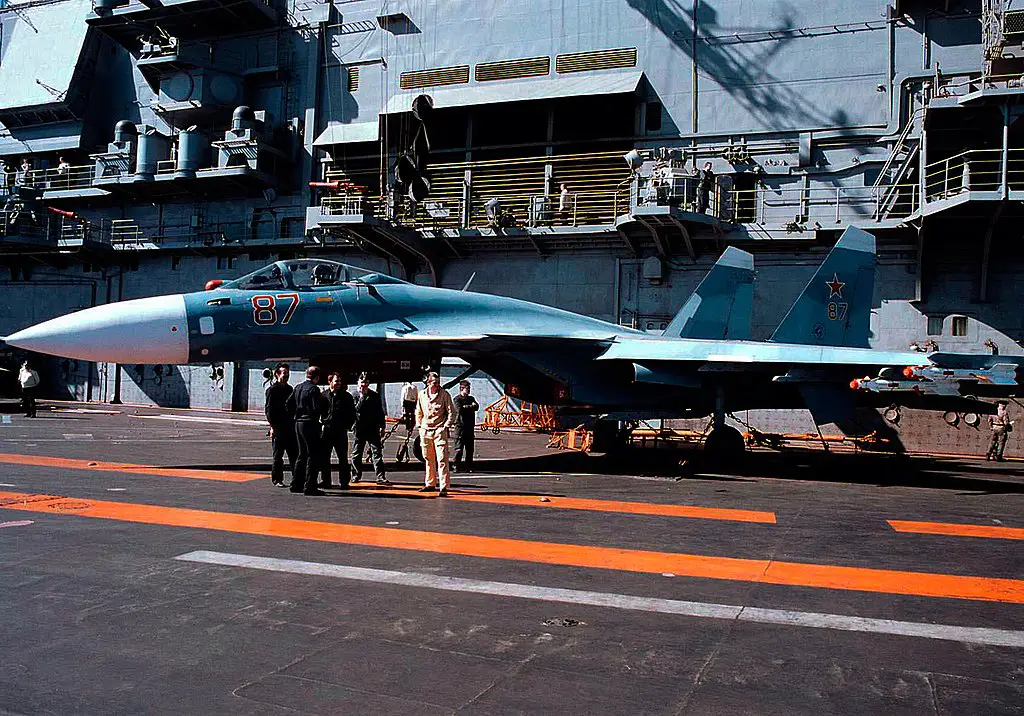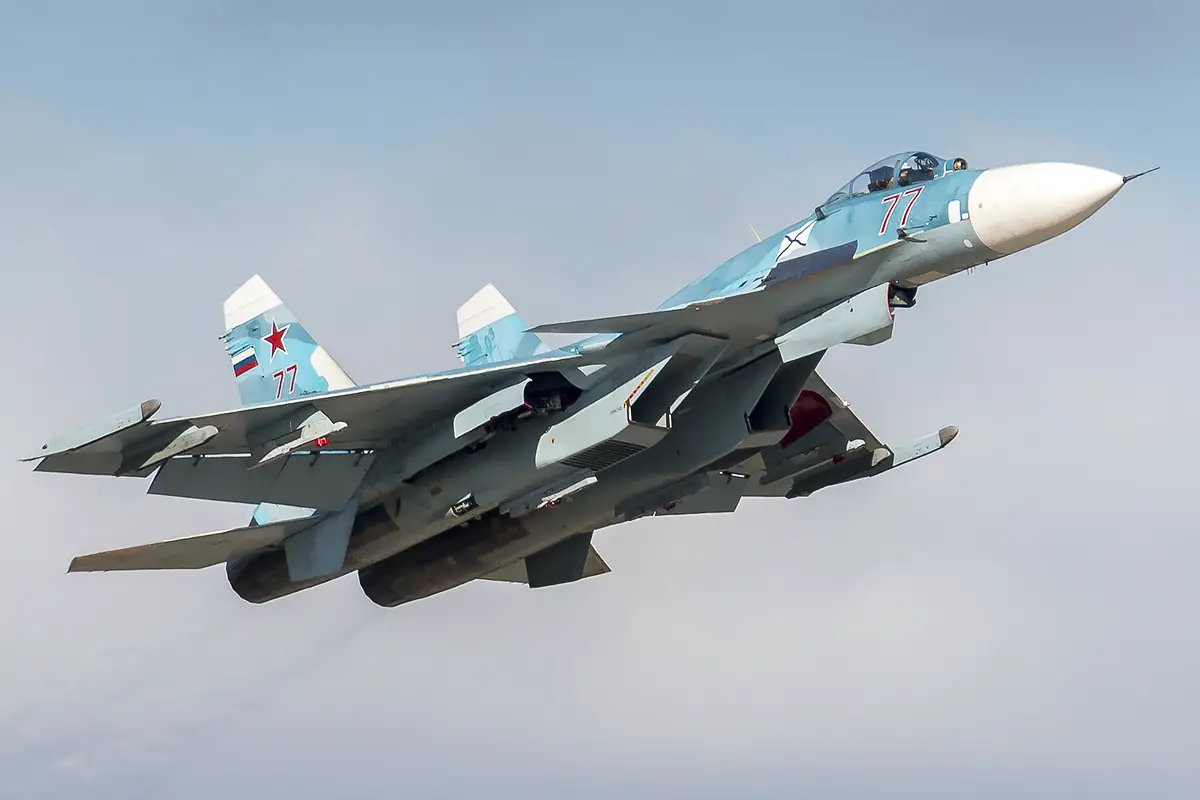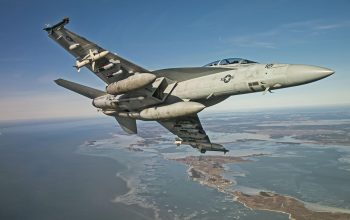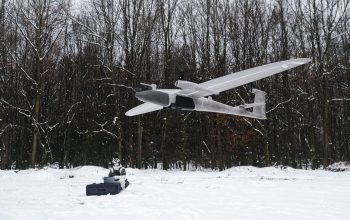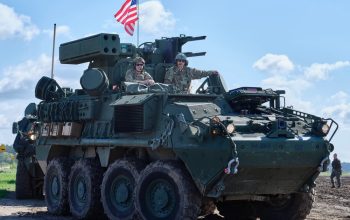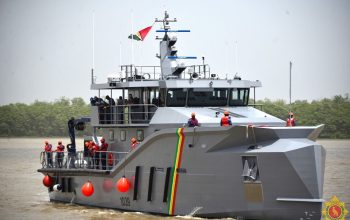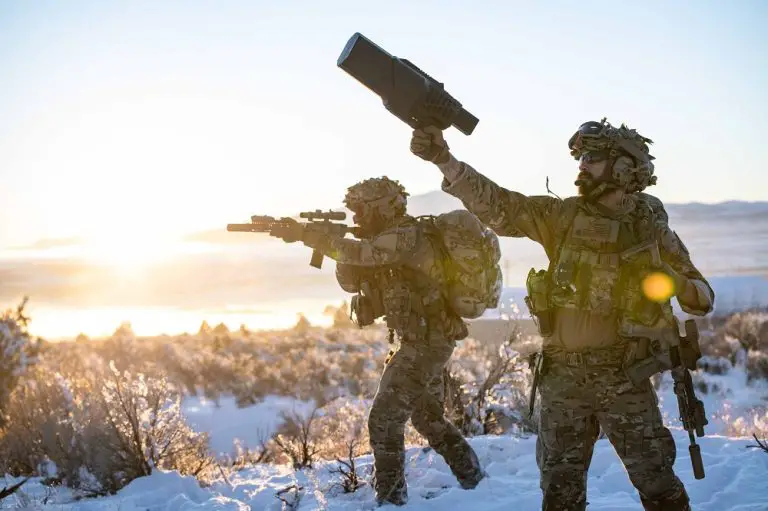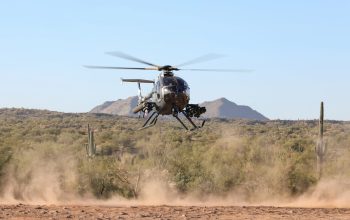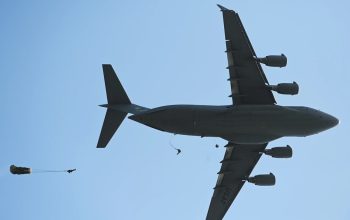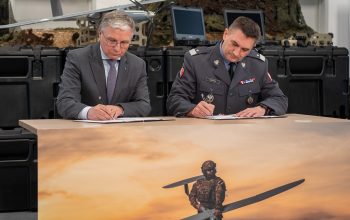The Sukhoi Su-33 (Su-27K ; NATO reporting name: Flanker-D) is an all-weather single-seat carrier-based twin-engine air superiority fighter designed by Sukhoi and manufactured by Komsomolsk-on-Amur Aircraft Production Association, derived from the Su-27 and initially known as the Su-27K. Compared with the Su-27, the Su-33 has a strengthened undercarriage and structure, folding wings and stabilators, all for carrier operations. The Su-33 has canards and its wings are larger than the Su-27 for increased lift. The Su-33 is intended for naval air superiority missions, the air defense and missile defense of a ship group, the destruction of any aerial, sea-surface and ground targets with missiles and bombs, as well as supporting the combat operations of other fleet air force units such as shipborne, missile-carrying, anti-submarine, radar surveillance, and other aircraft.
The Su-33 can also perform containment functions prior to engagement and maintaining an operational environment in the near and far maritime zones, which makes any aggression from the sea impractical or extremely difficult. The tactical operating range of the Su-33 is 1,200 km. The fighter is capable of barraging a designated area performing air defense and missile defense missions 500 kilometers away from its carrier over more than two hours. The use of a Su-33 leads to a one-and-a-half-fold to double increase in the strike capabilities of operational units in initial naval operations at a distance of 1,500-2,000 kilometers from the shore.
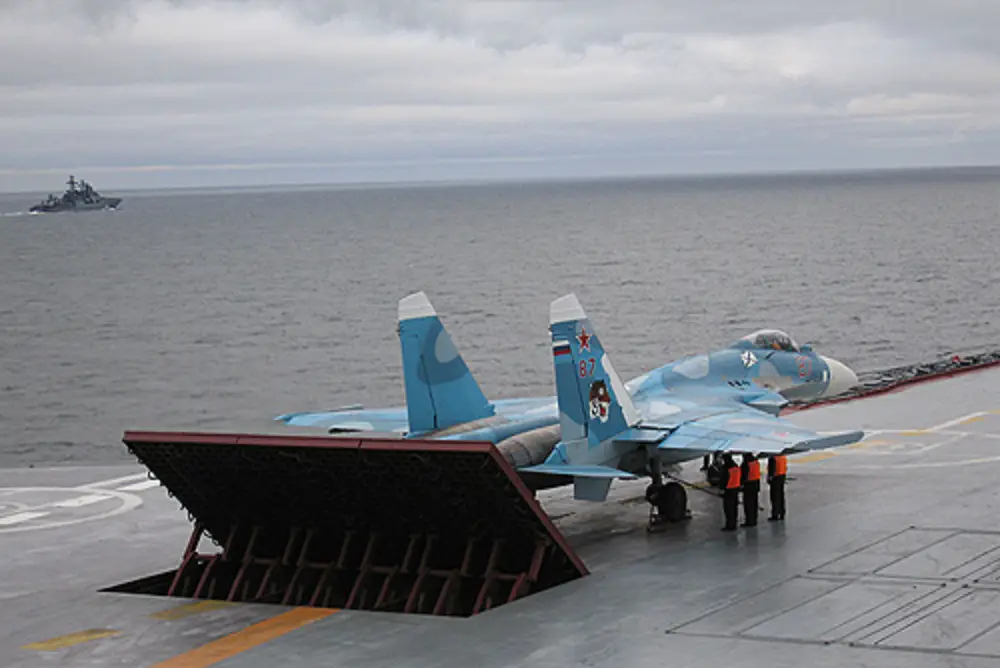
The aircraft is outfitted with more powerful turbofan engines to increase thrust-to-weight ratio, as well as an in-flight refuelling probe. The Su-33 carries guided missiles such as the R-73 (four) and R-27E (six) on twelve hardpoints, supplemented by the 150-round 30 mm GSh-30-1. It can carry an assortment of unguided rockets, bombs and cluster bombs for secondary air-to-ground missions. The aircraft can be used in both night and day operations at sea. The radar used, “Slot Back”, has been speculated to have poor multi-target tracking, making the Su-33 reliant on other radar platforms and airborne warning and control system (AWACS) aircraft like the Kamov Ka-31 early-warning helicopter. The R-27EM missiles have the capability to intercept anti-ship missiles. The infra-red search and track (IRST) system is placed to provide better downward visibility.
First used in operations in 1995 aboard the aircraft carrier Admiral Kuznetsov, the fighter officially entered service in August 1998, by which time the designation “Su-33” was used. Following the break-up of the Soviet Union and the subsequent downsizing of the Russian Navy, only 24 aircraft were produced. Attempted sales to China and India fell through. In 2009, the Russian Navy announced an order for 24 MiG-29Ks to replace the Su-33, to be delivered from 2011 to 2015. However, in 2015, the Navy’s Air and Air Defense Forces, announced that a second fighter regiment would be formed to augment the current force, with the intention that the MiG-29s be used by this new unit, with the existing Su-33s refurbished for further use.A contract for the installation of the SVP-24 targeting system on the Su-33s was signed in the spring 2016. The first modernized aircraft was delivered as of September of the same year. Deliveries of upgraded engines for Su-33 started in 2017.
